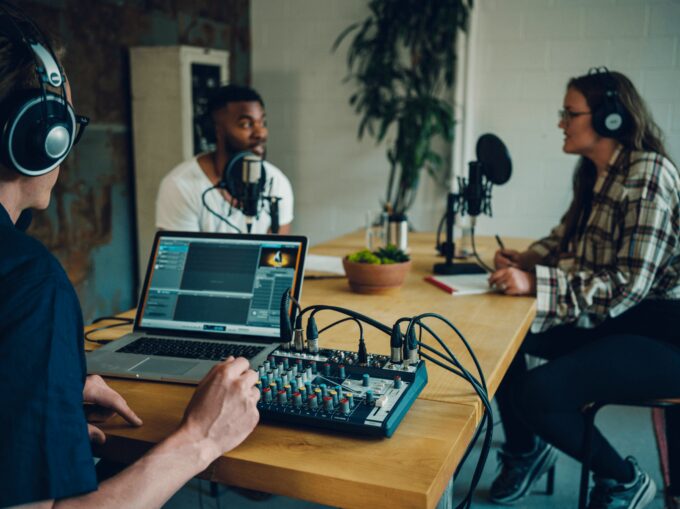
Source: pro.harman.com
Starting a podcast is an exhilarating journey into the world of digital storytelling. You’ve gathered your courage, your brilliant podcast idea, and maybe even a few pieces of high-quality recording equipment.
However, what often slips through the cracks — quite literally — is the need for soundproofing. While your charismatic voice may be podcast-ready, the same can’t be said for your echoey room or the pervasive street noise that manages to creep into your audio files.
That’s why we’re delving deep into the world of soundproofing, a necessary but often overlooked cornerstone of podcasting. Consider this your syllabus for Soundproofing 101, your crash course in delivering the purest audio experience to your eager audience.
The Importance of Soundproofing
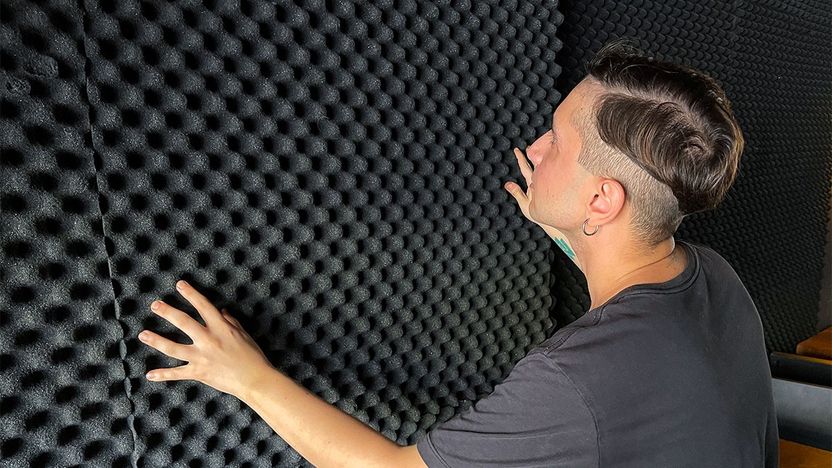
Source: realtor.com
Why Soundproofing Should Be Your Priority
When it comes to podcasting, content may be king, but sound quality is certainly the crown jewel. If listeners have to strain their ears to catch what you’re saying over background noise, you risk not only losing their attention but also their subscription.
According to EPOS findings, poor sound quality significantly contributes to listener fatigue. Exhausted listeners are less likely to engage with your content and may switch to another podcast with better audio quality.
If you’re diving into podcasting with no audience, this becomes even more crucial. Why? Well, first impressions matter, and poor sound quality could turn off potential long-term listeners. Check out this excellent guide on how to start a podcast with no audience for more tips that complement a well-soundproofed studio.
Audio Quality and Professionalism
A well-soundproofed studio screams professionalism. You don’t have to be a sound engineer to understand that an echo-free, noise-resistant environment provides a more refined and sophisticated auditory experience.
Soundproofing isn’t just about avoiding disturbances; it’s about capturing pure, unadulterated sound that helps you stand out in an increasingly saturated market.
Types of Soundproofing
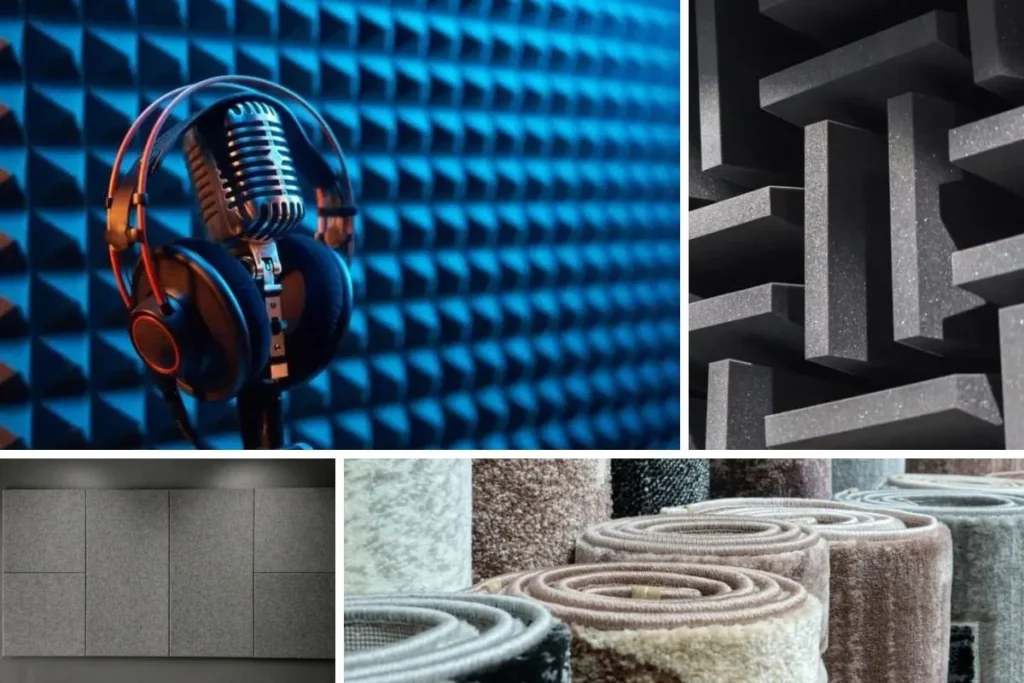
Source: homestratosphere.com
Understanding the different forms of soundproofing can empower you to make the best choice for your specific studio needs.
Sound Absorption
This form involves materials like foam, fabric, or even specialized acoustic paint that helps absorb sound waves. By doing so, sound absorption minimizes echoes and reverberations, creating a much cleaner sound environment. Think of it as a sponge that soaks up all the residual sound in a room, allowing your podcast’s audio to shine.
Sound Blocking
If sound absorption is a sponge, then sound blocking is a dam. It’s all about preventing sound from passing through walls, ceilings, and floors by using materials like mass-loaded vinyl, drywall, or even special types of insulation.
If you’re recording in an environment where external noise is a constant issue—perhaps you live next to a construction site or a bustling market—sound blocking should be your go-to method.
Sound Diffusion
A somewhat lesser-known technique, sound diffusion doesn’t absorb or block sound but redistributes it. This technique can break up energy concentrations in sound waves, reducing echoes and balancing the acoustics in a room. Diffusers come in various shapes and sizes, typically made from hard, reflective materials like wood or plastic.
Practical Soundproofing Solutions
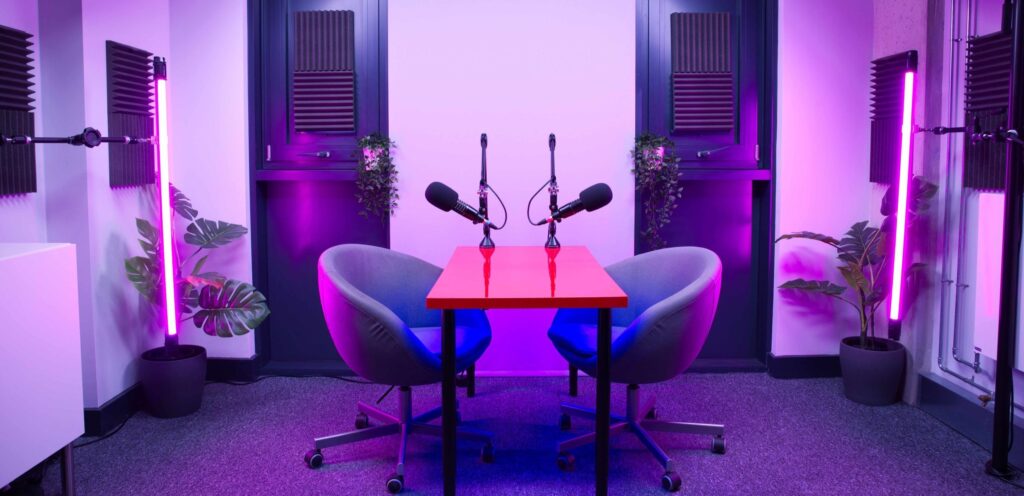
Source: podcaststudiohire.co.uk
Now that we’ve covered the why and the what, it’s time to delve into the how. Your studio, whether it’s a dedicated room or a corner of your living space, can benefit from a range of soundproofing techniques.
These methods don’t have to break the bank but can make a world of difference in your audio quality.
Rugs and Carpets
If you’ve ever walked into an empty room and clapped your hands, you’ll notice the sound echoing back. That’s because hard surfaces like floors reflect sound waves. One of the easiest ways to tackle this issue is by adding rugs or carpets to your recording space.
Soft, porous materials can absorb these reflections and dampen echoes significantly. According to a study published by Soundproof Central, even something as simple as a shaggy rug can significantly reduce reverberation time.
DIY Alternative ─ Towels or Blankets
If you’re podcasting on a budget, consider laying towels or blankets on the floor. While not as effective as rugs or carpets, they can still contribute to a less echoey environment.
Acoustic Panels
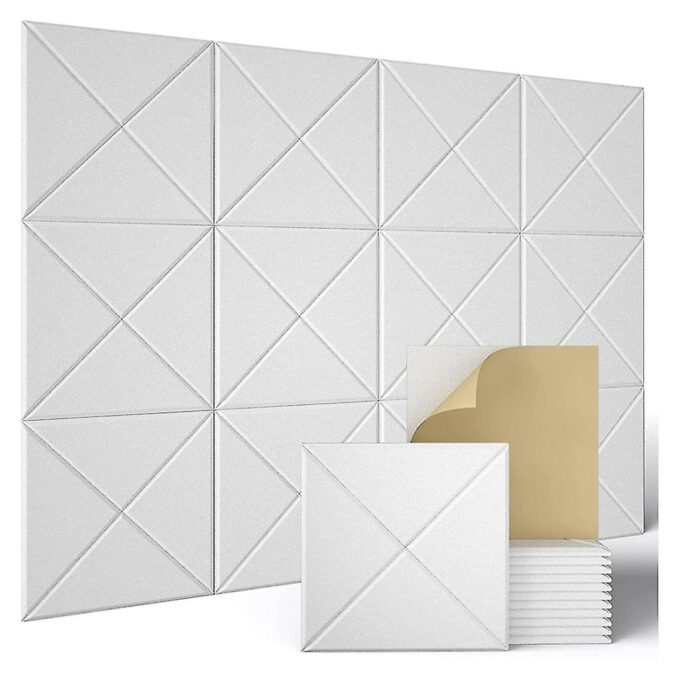
Source: fruugo.co.za
When it comes to sound absorption, acoustic panels are your studio’s best friend. These panels are usually made from foam and can be affixed to walls to absorb ambient sound and echo. There are various types of acoustic panels, from the pyramid and wedge-shaped to the more aesthetic fabric-wrapped varieties.
By strategically placing these around your room, you can significantly enhance your audio quality.
Where to Place Acoustic Panels
The positioning of acoustic panels is critical. A good rule of thumb is to install them at the points of first reflection — these are the spots where sound waves bounce back first after leaving the sound source (your mouth or microphone).
Bass Traps
If you’re venturing into podcasts that are music-intensive or you’re looking to create a studio with incredibly well-rounded sound, bass traps are for you. These are specialized acoustic energy absorbers designed to improve low-frequency sound. They are usually placed in corners where low-frequency sound tends to accumulate.
DIY Alternative ─ Stuffed Linen Bags
For the budget-conscious podcaster, stuffed linen bags with soft material like cotton can act as makeshift bass traps. Although not as effective as commercial bass traps, they can still offer some level of low-frequency sound absorption.
Weatherstripping
It’s the little things that count, and in soundproofing, the tiniest gap can let in a surprisingly large amount of sound. Weatherstripping is a cost-effective way to seal gaps around doors and windows. Foam tape or adhesive-backed strips can be applied easily, providing an additional layer of sound blocking.
Additional Tip ─ Door Sweeps
Adding a door sweep — essentially a long strip of material that covers the gap between the door and the floor — can further prevent sound leakage.
Case Study ─ A Real-World Example
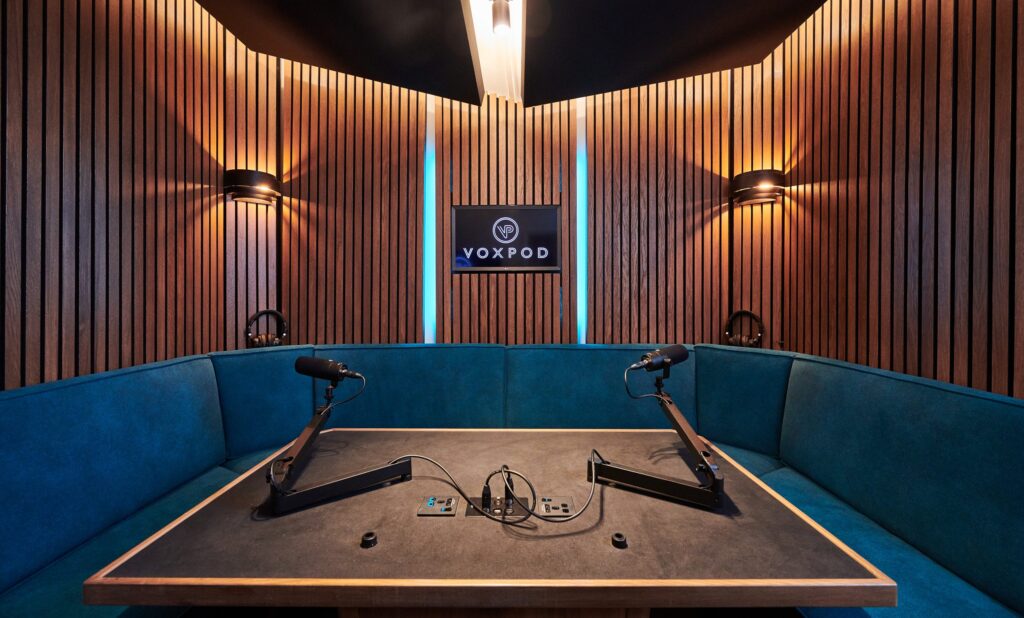
Source: voxpod.studio
When it comes to high-quality podcasting, few are as widely acclaimed as The Daily by The New York Times. It’s not just the compelling stories or insightful interviews that make this podcast a hit — it’s also their impeccable sound quality.
In an era where anyone with a microphone and an internet connection can start a podcast, The Daily sets itself apart with a professionally soundproofed studio that allows the content to take center stage.
The Daily’s Soundproofing Journey
Before arriving at their state-of-the-art studio, The Daily also faced soundproofing challenges. Initially, they dealt with the kind of ambient noise issues that plague most podcasters. However, they tackled these challenges head-on with a multi-pronged approach:
- Sound absorption ─ Custom-made acoustic panels lined the walls to eliminate echo and reduce ambient noise.
- Sound blocking ─ Special insulating materials were fitted into the walls and ceiling to block external sounds. The doors were double-layered and sealed with weatherstripping to prevent sound leakage.
- Sound diffusion ─ Wooden diffusers were strategically placed around the room to scatter and balance out sound waves.
The results speak for themselves — clear, unadulterated audio that highlights the nuances of every discussion and interview.
Lessons for Aspiring Podcasters
The Daily’s experience provides crucial lessons for podcasters at all stages, whether you’re just exploring how to start a podcast with no audience or you’re already a seasoned veteran. It shows that investing in quality soundproofing solutions doesn’t just improve your audio; it elevates your entire podcasting enterprise.
Conclusion
Setting up a podcast studio involves more than just microphones, mixers, and compelling content. To truly connect with your audience and offer an enriching listening experience, soundproofing should be high on your list of priorities.
The Wrap-Up
- Sound absorption ─ Use materials like acoustic panels, rugs, and carpets to soak up residual sound.
- Sound blocking ─ Invest in insulating materials and weatherstripping to keep external noise at bay.
- Sound diffusion ─ Consider incorporating diffusers for a balanced and echo-free sound environment.
Soundproofing isn’t just a technical prerequisite; it’s a demonstration of the respect you have for your listeners. After all, your audience is giving you one of their most precious resources: time. Make it worthwhile by offering them a distraction-free, pure auditory experience.
So grab that foam panel, lay down that area rug, and seal that door gap. As you embark on your podcasting journey, make soundproofing your invisible co-host. With these tips, you’re not just blocking out unwanted noise; you’re paving the way for podcasting greatness.

![How to Backup iPhone Photos [5 Methods] – 2024 Guide How to Backup iPhone Photos [5 Methods] – 2024 Guide](https://www.digitalcare.top/wp-content/uploads/2018/08/0-211x150.png)
![How to Turn off Find my iPhone [5 Methods] How to Turn off Find my iPhone [5 Methods]](https://www.digitalcare.top/wp-content/uploads/2019/05/find-my-phone-iphone-211x150.jpeg)
![How to Copy and Paste on iPhone? [All Models] How to Copy and Paste on iPhone? [All Models]](https://www.digitalcare.top/wp-content/uploads/2019/10/2-211x150.png)